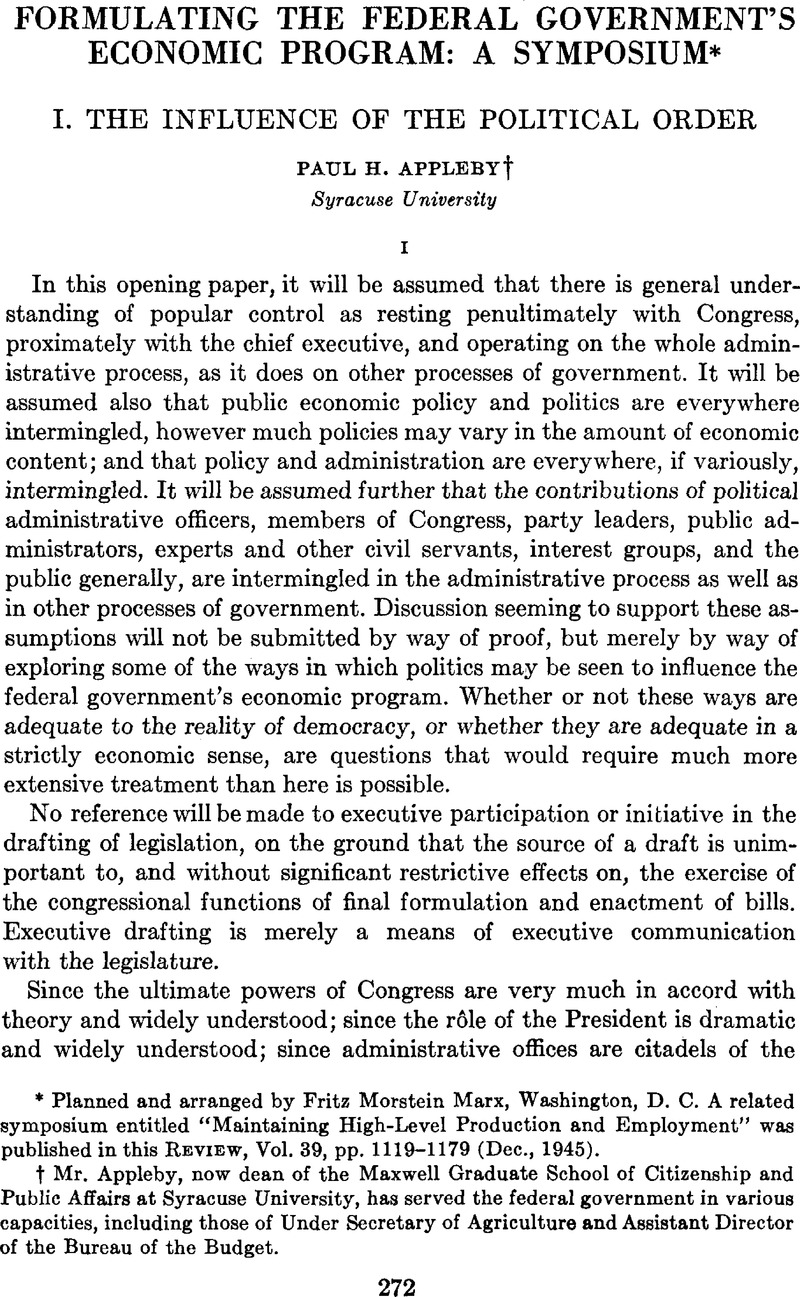No CrossRef data available.
Published online by Cambridge University Press: 02 September 2013

1 Schattschneider, E. E., “Party Government and Employment Policy,” in this Review, Vol. 39 (1945), p. 1155.Google Scholar
2 See Starr, Joseph R., “Research Activities of British Political Parties,” Public Opinion Quarterly, Vol. 1 (Oct., 1937), pp. 103 ff.CrossRefGoogle Scholar
3 C. A. H. Thomson, “Research and the Republican Party,” ibid., Vol. 3 (Apr. 1939), p. 313.
4 This proposal and others here discussed have been reformulated for fresh consideration by the Committee on Political Parties of the American Political Science Association, established early in 1947. The committee is under the chairmanship of Professor E. E. Schattschneider, of Wesleyan University.
5 Bridges, Ronald, “The Republican Program Committee,” Public Opinion Quarterly, Vol. 3 (Apr., 1939), p. 302.CrossRefGoogle Scholar
6 See Shannon, J. B., “Presidential Politics in the South: 1938,” Journal of Politics, Vol. 1 (1939), pp. 146 ff., pp. 258 ff.CrossRefGoogle Scholar
7 Ibid., p. 295.
8 Beyond the proposals here considered for strengthening and institutionalizing central party leadership, there remain many other suggestions made for improving party responsibility. These include various proposals for changes in election laws, including elimination of the poll tax, provision for permanent registration, scheduling elections on legal holidays, eradication of gerrymandering, and so on. They also include proposals for constitutional amendments which would introduce a modified version of the cabinet system of government, or which would provide a uniform congressional four-year term in both houses so that the President and Congress would be elected as part of the same national decision. This paper is confined to the organization of the parties themselves.
Comments
No Comments have been published for this article.